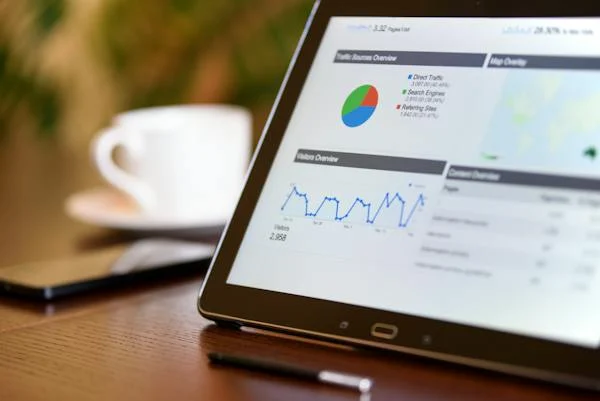Maximizing Digital Marketing Campaigns
When working with digital marketing agencies, maximizing your campaigns begins with a strong foundation. This involves setting clear objectives and establishing division goals.
Setting Clear Objectives
Clear objectives are the cornerstone of successful digital marketing campaigns. This involves identifying specific, measurable, achievable, relevant, and time-bound (SMART) goals. Setting such goals can direct your marketing efforts and provide a basis for evaluating success.
For example, instead of aiming to “increase brand awareness,” a SMART goal might be “increase social media followers by 20% in Q1.” This goal is specific and measurable, making it easier to track progress and adjust strategies as needed.
| Objective Type | Goal Example |
|---|---|
| Specific | Increase social media followers by 20% |
| Measurable | Gain 1,000 new email subscribers |
| Achievable | Boost website traffic by 15% |
| Relevant | Enhance brand visibility in target market |
| Time-bound | Achieve a 5% increase in sales within six months |
For a comprehensive approach, CEOs, business owners, and marketing executives can consider integrating SMART goal-setting techniques within their campaigns (WebFX). Partnering with top-rated marketing companies can also provide the necessary expertise in creating, launching, and monitoring successful digital marketing campaigns, leading to significant results (WebFX).
Establishing Division Goals
Setting division-specific goals ensures each part of the organization aligns with the overarching campaign objectives. This approach encourages a cohesive strategy where each division understands its role and responsibilities.
For instance, if the overall campaign’s objective is to drive a 25% increase in sales, the marketing division might focus on lead generation, while the sales division centers efforts on converting leads to customers. Establishing such goals at the division level helps maintain focus and accountability.
| Division | Example Goal |
|---|---|
| Marketing | Generate 500 qualified leads per month |
| Sales | Convert 30% of leads into customers |
| Social Media | Increase engagement rate by 10% |
| Customer Service | Improve response time to under 30 minutes |
Following insights from Red Carrot, it’s critical to ensure that these goals are specific and aligned with the overall campaign objectives. This unified strategy not only drives better results but also allows for more accurate tracking and monitoring of progress.
In adopting these strategies, exploring various digital marketing services such as content marketing services, search engine optimization (SEO), or social media marketing agency can further enhance your campaign efforts.
Tracking Campaign Performance
To truly understand the impact of your digital marketing efforts, you need to track and analyze performance effectively. Here, we delve into key performance indicators (KPIs) and monitoring metrics that play a crucial role in this process.
Key Performance Indicators (KPIs)
Key Performance Indicators (KPIs) are essential in measuring the overall digital marketing campaign performance. They help monitor the campaign’s progress against the objectives and targets set in your goals (Red Carrot). Below are some vital KPIs to consider:
- Conversion Rate: The percentage of visitors who complete a desired action.
- Click-Through Rate (CTR): The ratio of users who click on a specific link to the number of total users who view a page.
- Customer Acquisition Cost (CAC): The cost associated with convincing a potential customer to buy a product/service.
- Return on Investment (ROI): A measure of the profitability generated from your marketing efforts.
- Bounce Rate: The percentage of visitors who navigate away from the site after viewing only one page.
| KPI | Importance |
|---|---|
| Conversion Rate | Measures the effectiveness of your campaign in driving desired actions. |
| Click-Through Rate (CTR) | Indicates the engagement level with your content. |
| Customer Acquisition Cost (CAC) | Helps in budgeting and understanding the expense needed to acquire new customers. |
| Return on Investment (ROI) | Determines the overall financial return from your campaigns. |
| Bounce Rate | Shows the effectiveness of your landing pages in retaining visitors. |
Monitoring Metrics
Specific metrics within the KPIs should be used to monitor and identify campaign performance against objectives and targets set in the goals (Red Carrot). It’s essential to continuously track these metrics to make informed decisions:
- Impressions: The number of times your ad is displayed.
- Unique Visitors: The number of distinct individuals visiting your site within a set period.
- Time on Site: The average duration a visitor spends on your site.
- Social Media Engagement: Includes likes, shares, comments, and other interactive actions.
Setting up tools like Google Analytics is vital to measure digital marketing success, as it consolidates all campaign data in one place and facilitates performance analysis (WebFX).
In summary, understanding and implementing KPIs and metrics are fundamental in tracking the success of your digital marketing campaigns. For more in-depth insights, you can explore social media marketing strategies, SEO agency, and email marketing software.
Social Media Algorithms Insight
Social media algorithms are the backbone of modern digital marketing strategies. For business leaders looking to optimize their marketing campaigns, understanding these algorithms is critical to effectively reach and engage their audience.
Personalized Content Delivery
Social media algorithms play a crucial role in personalized content delivery. By filtering and matching content to users based on their preferences, interests, and behaviors, these algorithms ensure a positive user experience (Sprout Social). This personalization means that users are more likely to interact with content that resonates with them, leading to higher engagement rates.
How personalized content delivery works:
- User Interactions: Algorithms analyze actions such as likes, comments, and shares.
- Content Relevance: Based on user data, algorithms prioritize relevant posts.
- Engagement Prediction: Algorithms predict which content a user is most likely to engage with.
Marketers can leverage this understanding to boost their online presence and engagement. By optimizing content to fit algorithmic trends and targeting users with similar interests, you can increase the potential for effective distribution. Explore more on personalized marketing strategies to implement these practices in your campaigns.
Maximizing Engagement
Engagement is a key metric of success in social media marketing. Understanding social media algorithms allows marketers to enhance their online presence and reach a broader audience (Sprout Social). Several strategies can be employed to maximize engagement:
- Optimizing Content Creation: Tailor content to fit algorithmic trends. Use engaging formats like videos and interactive posts.
- Timing and Frequency: Post content during peak times when your target audience is most active.
- Utilizing Hashtags: Include relevant hashtags to increase content visibility.
- Engaging Captions: Craft compelling captions that prompt users to interact.
By using these strategies, you can significantly enhance your content’s visibility and interaction rates.
| Strategy | Description | Potential Impact |
|---|---|---|
| Optimizing Content | Use videos, interactive posts | Higher user engagement |
| Timing | Post during peak activity hours | Increased visibility |
| Hashtags | Add relevant and trending hashtags | Expanded reach |
| Captions | Create compelling and engaging captions | More interactions (likes, comments) |
For more in-depth insights on increasing social media engagement, visit our article on social media marketing strategies.
By understanding and leveraging the power of social media algorithms, digital marketing agencies can drive meaningful results for their clients. With optimized content delivery and engagement strategies, you are better positioned to harness the full potential of social platforms.
Impact of AI in Marketing
Artificial intelligence (AI) is revolutionizing digital marketing by enabling more efficient and effective strategies. Understanding how AI impacts marketing can help you optimize your campaigns and drive better results. Two significant areas where AI is making an impact are personalized content delivery and real-time analytics.
Personalized Content Delivery
AI enhances personalized content delivery by leveraging algorithms to segment users and deliver tailored content based on their preferences and behavior (Sprout Social). This process involves analyzing vast amounts of data to identify patterns and trends, allowing digital marketing agencies to create highly targeted and relevant content for your audience.
- User Segmentation: AI can segment users based on demographics, behavior, and preferences, enabling you to deliver personalized experiences.
- Content Recommendations: Algorithms predict the type of content that will engage each user, enhancing user experience and boosting engagement rates.
This data-driven approach helps increase user satisfaction, loyalty, and conversion rates. To learn more about personalized strategies, visit our page on personalized marketing strategies.
Real-time Analytics
AI-powered real-time analytics provide valuable insights into the performance of your marketing campaigns. These tools can analyze data as it is generated, giving you up-to-the-minute information on how your strategies are performing.
| Feature | Benefit |
|---|---|
| Instant Data Processing | Allows immediate adjustments to marketing strategies |
| Performance Metrics | Monitors key metrics such as engagement, click-through rates, and conversions |
| Predictive Analytics | Forecasts future trends and consumer behavior |
Real-time analytics enable you to make informed decisions quickly, ensuring that your marketing efforts are always optimized for the best possible results. Visit our page on digital marketing types to explore more on how AI and other tools can enhance your marketing strategies.
These advancements in AI are crucial for digital marketing agencies to stay competitive and deliver superior results for clients. By leveraging AI for personalized content delivery and real-time analytics, you can ensure your marketing campaigns are both effective and efficient. For additional insights, check out our articles on content marketing services and social media marketing agency.
Successful Marketing Campaign Examples
Looking at the successes of top digital marketing agencies, we can draw insights from some of the most impactful campaigns. Here, we examine two standout examples: Coca-Cola’s “Share a Coke” and Dove’s “Real Beauty Sketches.”
Coca-Cola’s “Share a Coke”
The “Share a Coke” campaign by Coca-Cola is a prime example of a highly effective digital marketing strategy that successfully engaged consumers on a personal level. Launched in 2013, this campaign replaced the iconic Coca-Cola logo on bottles with popular names, encouraging customers to find bottles with their names or the names of friends and family. This personal touch fostered a sense of connection and encouraged people to share their Cokes with others, sparking a social media frenzy (Power Textor).
Key results from the “Share a Coke” campaign include:
- Sales Increase: The campaign led to a significant rise in sales during the summer of 2013.
- Social Media Engagement: The campaign generated massive social media buzz, with consumers sharing millions of photos of personalized bottles on platforms like Instagram and Facebook.
- Consumer Connection: By personalizing the products, Coca-Cola was able to establish a deeper emotional bond with its customers, enhancing brand loyalty (Zen Media).
Dove’s “Real Beauty Sketches”
Dove’s “Real Beauty Sketches” campaign is another outstanding example of a digital marketing success. Launched in 2013, this campaign aimed to challenge societal beauty standards and boost women’s self-esteem. It featured women being drawn by a forensic sketch artist based on their own descriptions and then based on the descriptions of strangers. The contrasting sketches highlighted the gap between self-perception and how others see them, promoting self-acceptance and sparking conversations about beauty standards (Power Textor).
Key metrics from the “Real Beauty Sketches” campaign include:
- YouTube Views: The campaign video became a viral sensation, amassing over 67 million views within a month of its launch.
- Emotional Impact: The campaign struck an emotional chord with audiences worldwide, leading to widespread media coverage and discussions about self-esteem and beauty.
- Brand Perception: Dove reinforced its brand message of “real beauty” and strengthened its positioning as a champion for women’s self-esteem and empowerment.
| Campaign | Key Results |
|---|---|
| Coca-Cola’s “Share a Coke” | Increased sales, high social media engagement, deeper consumer connection |
| Dove’s “Real Beauty Sketches” | Over 67 million YouTube views, emotional impact, strengthened brand perception |
Studying these successful campaigns, it becomes clear that effective digital marketing involves creating personalized, emotionally resonant content that engages the audience on a deeper level. For those interested in exploring more such strategies, visit digital marketing types and content marketing examples.
Range of Digital Marketing Services
Digital marketing agencies offer a multitude of services that can help your business thrive in the online landscape. Two of the most essential services are Search Engine Optimization (SEO) and Content Marketing.
Search Engine Optimization (SEO)
Search Engine Optimization (SEO) is a critical strategy for improving your website’s visibility on search engines like Google. By optimizing your site’s content and structure, SEO helps you rank higher in search engine results pages (SERPs), driving more organic traffic to your website.
Key Components of SEO:
- Keyword Research: Identifying the terms your target audience is searching for.
- On-Page SEO: Optimizing individual pages for targeted keywords (e.g., title tags, meta descriptions).
- Off-Page SEO: Building backlinks from other websites to improve domain authority.
- Technical SEO: Enhancing the backend of your website to ensure fast load times and mobile-friendliness.
Benefits:
- Increased Visibility: Higher SERP rankings lead to more traffic.
- Cost-Effective: Organic traffic is free once you rank well.
- Trust and Credibility: High rankings instill trust in potential customers.
For more information on improving your site’s SEO, visit our dedicated page on search engine optimization (SEO).
Content Marketing
Content marketing involves the creation and distribution of valuable, relevant content designed to attract and engage your target audience. This approach helps in building brand awareness, fostering customer loyalty, and driving sales.
Types of Content:
- Blog Posts: Informative articles that address common questions or problems.
- Videos: Engaging visual content that can be shared on social media.
- Infographics: Visual representations of data and information.
- Podcasts: Audio content that can be consumed on the go.
Benefits:
- Brand Awareness: High-quality content increases your brand’s visibility.
- Customer Engagement: Engaging content keeps visitors on your site longer.
- Lead Generation: Effective content can guide potential customers toward your products or services.
Common Metrics for Measuring Content Marketing Success:
- Page Views: Number of times your content is viewed.
- Engagement: Amount of time users spend on your content.
- Conversion Rate: Percentage of visitors who take a desired action.
| Metric | Definition | Importance |
|---|---|---|
| Page Views | Number of views | Indicates content popularity |
| Engagement | Time spent on content | Measures visitor interest |
| Conversion Rate | Actions taken | Evaluates effectiveness in driving sales |
For additional insights, explore our section on content marketing services to see how you can leverage content to meet your business goals.
You can also learn more about other vital services offered by digital marketing agencies such as pay-per-click advertising (ppc), email marketing campaigns, and social media marketing strategies.
Understanding Pricing Models
Understanding the pricing models of digital marketing agencies is essential for CEOs, business owners, CMOs, and marketing executives. The cost of services can vary greatly depending on several factors, and having a clear picture of these can help in making informed decisions.
Factors Influencing Pricing
Several elements affect how digital marketing agencies set their prices. These include:
- Client’s Expectations and Growth Goals: The scope and scale of the project play a significant role. Larger, more complex campaigns aimed at rapid growth generally cost more.
- Agency Experience: Established agencies with a proven track record often charge higher rates due to their expertise and success rate.
- Company Size: The size of the client’s company can impact pricing. Larger businesses may need more extensive services, influencing the overall cost.
- Specific Strategies Employed: The type of digital marketing strategies used, such as SEO, content marketing, pay-per-click advertising (ppc), and social media marketing, will affect the pricing.
Average Costs
The cost of digital marketing services can vary widely. Here’s a detailed breakdown of the average costs for some of the top services offered by digital marketing agencies (HawkSEM):
| Service | Average Cost |
|---|---|
| SEO | $1,000 – $30,000 per month |
| Marketing Strategy | $3,000 – $10,000 one-time fee |
| Ecommerce | $2,000 – $12,000 per month |
| SaaS | $5,000 – $20,000 per month |
| CRO (Conversion Rate Optimization) | $800 – $10,000 per month |
| Social Media Marketing | $900 – $20,000 per month |
For example, pricing for Search Engine Optimization (SEO) can range from $500 to $1,000 per month for local SEO, whereas project-based pricing for targeted SEO campaigns, such as website audits and keyword research, can range from $5,000 to $30,000. This highlights the importance of tailoring personalized marketing strategies to meet specific business needs.
When considering the different pricing models, it’s advisable to have a clear understanding of the services included and to evaluate whether these align with your marketing goals and budget. For more examples of digital marketing services and their effectiveness, explore our articles on content marketing services, video marketing services, and email marketing campaigns.
Understanding the various factors influencing pricing and the average costs can help leaders in making informed decisions about partnering with a digital marketing agency. Taking these elements into account will ensure that the investment aligns with the company’s overall growth objectives and marketing strategy.
Measuring Marketing Success
To ensure your digital marketing campaigns are effective, it’s essential to measure their success accurately. This involves setting SMART goals and analyzing key performance indicators (KPIs). Here’s how top digital marketing agencies drive results:
SMART Goal Setting
Setting SMART goals is a critical step in measuring marketing success. SMART stands for Specific, Measurable, Achievable, Relevant, and Time-bound. These goals provide clear benchmarks to track and evaluate your campaign’s progress.
Example of SMART Goals
- Specific: Increase website traffic
- Measurable: Achieve a 20% increase
- Achievable: Based on previous campaign data
- Relevant: Aligns with company growth objectives
- Time-bound: Accomplish within Q1
| Goal Component | Example |
|---|---|
| Specific | Increase website traffic |
| Measurable | 20% increase |
| Achievable | Based on historical data |
| Relevant | Supports growth objectives |
| Time-bound | Within Q1 |
By setting SMART goals, you can clearly define what success looks like for your campaign. For instance, a goal like “Increase sales by 25% for Q1” is trackable and provides a tangible target (WebFX).
Analyzing KPIs
Key performance indicators (KPIs) are quantifiable metrics used to evaluate the performance of your marketing efforts. Analyzing these indicators helps you understand the effectiveness of your campaigns.
| KPI | Metric Type | Example |
|---|---|---|
| Conversion Rate | Performance | 5% increase in conversions |
| Customer Acquisition Cost (CAC) | Cost | $10 per new customer |
| Return on Investment (ROI) | Financial | 150% ROI |
| Click-Through Rate (CTR) | Engagement | 6% for email campaigns |
| Bounce Rate | Behavior | 40% reduction |
It’s crucial to differentiate between KPIs and vanity metrics. Vanity metrics, like total social media followers, may look impressive but don’t necessarily indicate marketing success or returns (WebFX).
To measure marketing success accurately, consider partnering with top-rated digital marketing agencies. These agencies bring expertise in creating, launching, and monitoring successful digital marketing campaigns, leading to significant results for your business.
For more on setting clear objectives and tracking performance, explore our articles on integrated marketing communications and seo agency.





















